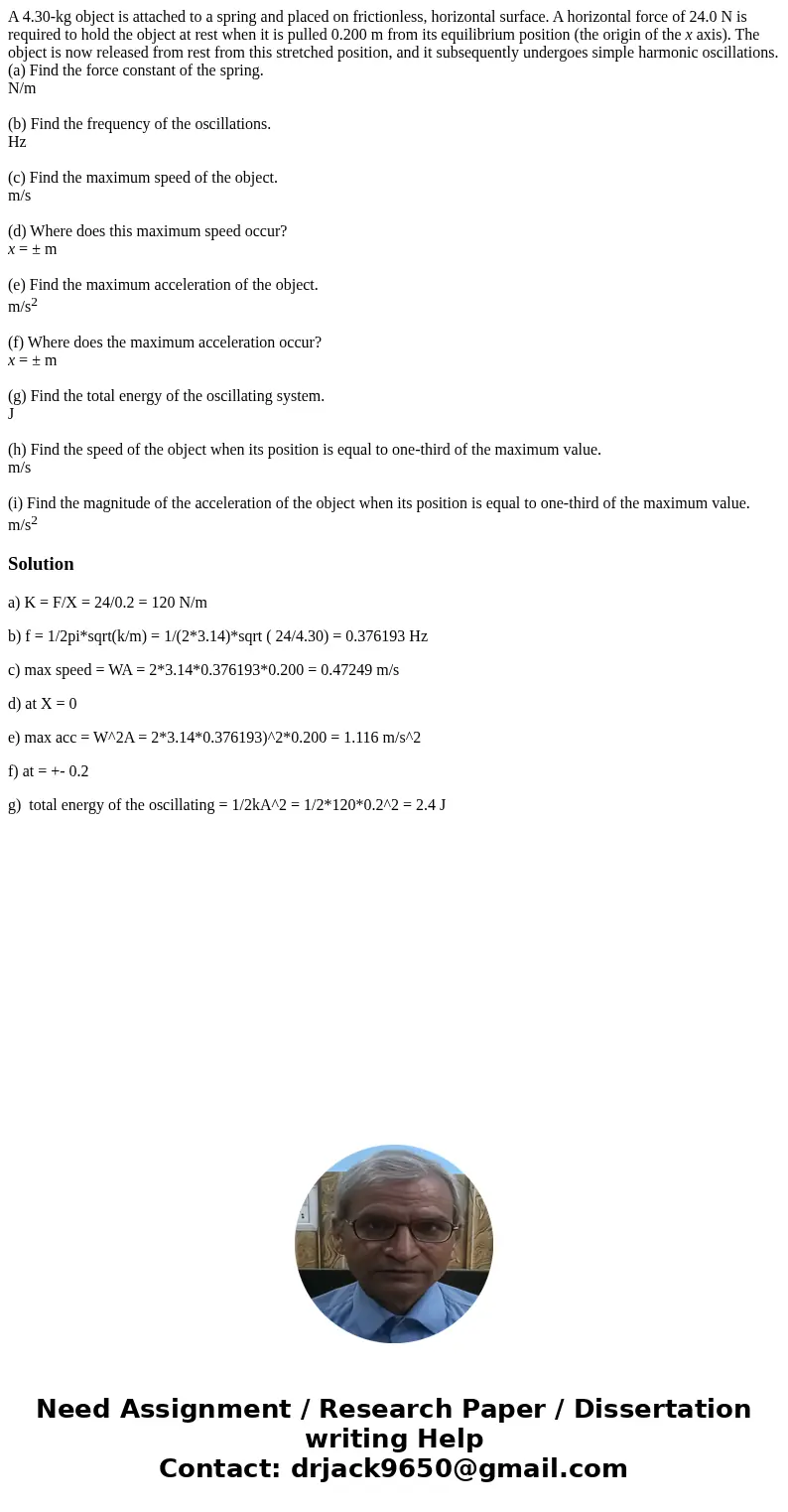A 430kg object is attached to a spring and placed on frictio
A 4.30-kg object is attached to a spring and placed on frictionless, horizontal surface. A horizontal force of 24.0 N is required to hold the object at rest when it is pulled 0.200 m from its equilibrium position (the origin of the x axis). The object is now released from rest from this stretched position, and it subsequently undergoes simple harmonic oscillations. (a) Find the force constant of the spring.
N/m
(b) Find the frequency of the oscillations.
Hz
(c) Find the maximum speed of the object.
m/s
(d) Where does this maximum speed occur?
x = ± m
(e) Find the maximum acceleration of the object.
m/s2
(f) Where does the maximum acceleration occur?
x = ± m
(g) Find the total energy of the oscillating system.
J
(h) Find the speed of the object when its position is equal to one-third of the maximum value.
m/s
(i) Find the magnitude of the acceleration of the object when its position is equal to one-third of the maximum value.
m/s2
Solution
a) K = F/X = 24/0.2 = 120 N/m
b) f = 1/2pi*sqrt(k/m) = 1/(2*3.14)*sqrt ( 24/4.30) = 0.376193 Hz
c) max speed = WA = 2*3.14*0.376193*0.200 = 0.47249 m/s
d) at X = 0
e) max acc = W^2A = 2*3.14*0.376193)^2*0.200 = 1.116 m/s^2
f) at = +- 0.2
g) total energy of the oscillating = 1/2kA^2 = 1/2*120*0.2^2 = 2.4 J

 Homework Sourse
Homework Sourse